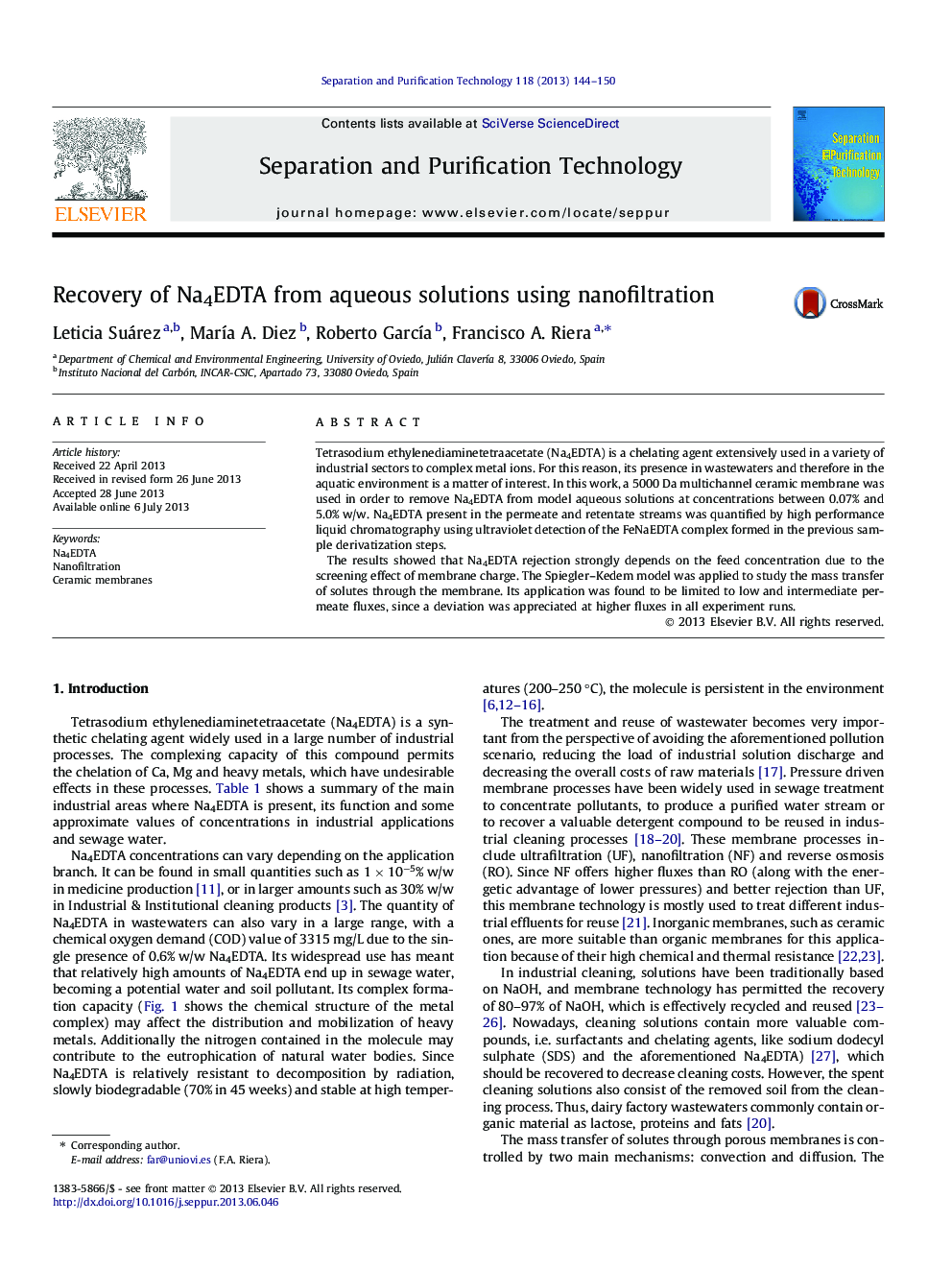| Article ID | Journal | Published Year | Pages | File Type |
|---|---|---|---|---|
| 641490 | Separation and Purification Technology | 2013 | 7 Pages |
•Nanofiltration is an efficient technology to remove Na4EDTA from diluted solutions.•Na4EDTA rejection is strongly dependent on electrostatic effects (membrane/solute).•The Spliegler–Kedem model can explain the Na4EDTA rejections at low and moderate permeate fluxes.
Tetrasodium ethylenediaminetetraacetate (Na4EDTA) is a chelating agent extensively used in a variety of industrial sectors to complex metal ions. For this reason, its presence in wastewaters and therefore in the aquatic environment is a matter of interest. In this work, a 5000 Da multichannel ceramic membrane was used in order to remove Na4EDTA from model aqueous solutions at concentrations between 0.07% and 5.0% w/w. Na4EDTA present in the permeate and retentate streams was quantified by high performance liquid chromatography using ultraviolet detection of the FeNaEDTA complex formed in the previous sample derivatization steps.The results showed that Na4EDTA rejection strongly depends on the feed concentration due to the screening effect of membrane charge. The Spiegler–Kedem model was applied to study the mass transfer of solutes through the membrane. Its application was found to be limited to low and intermediate permeate fluxes, since a deviation was appreciated at higher fluxes in all experiment runs.
